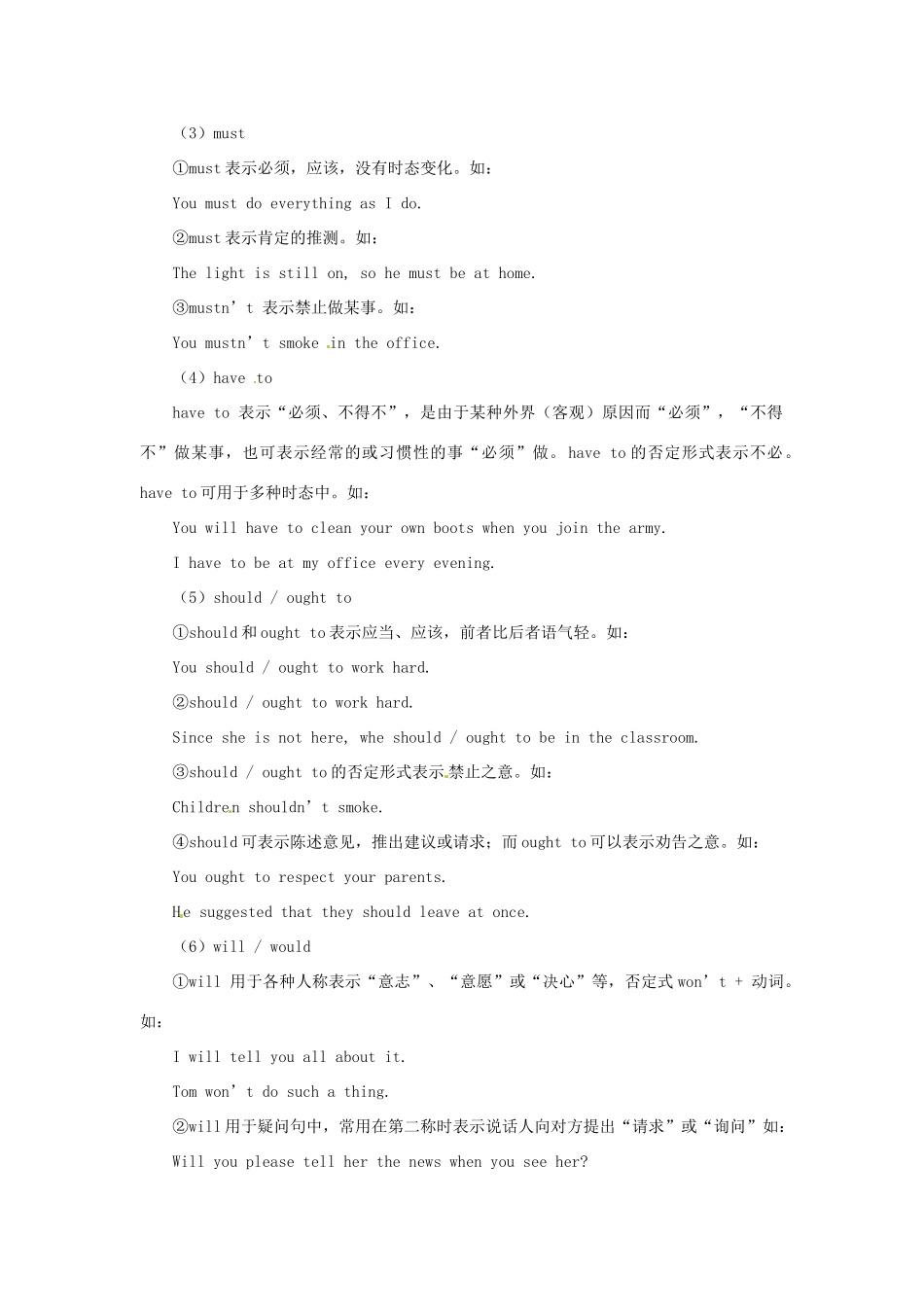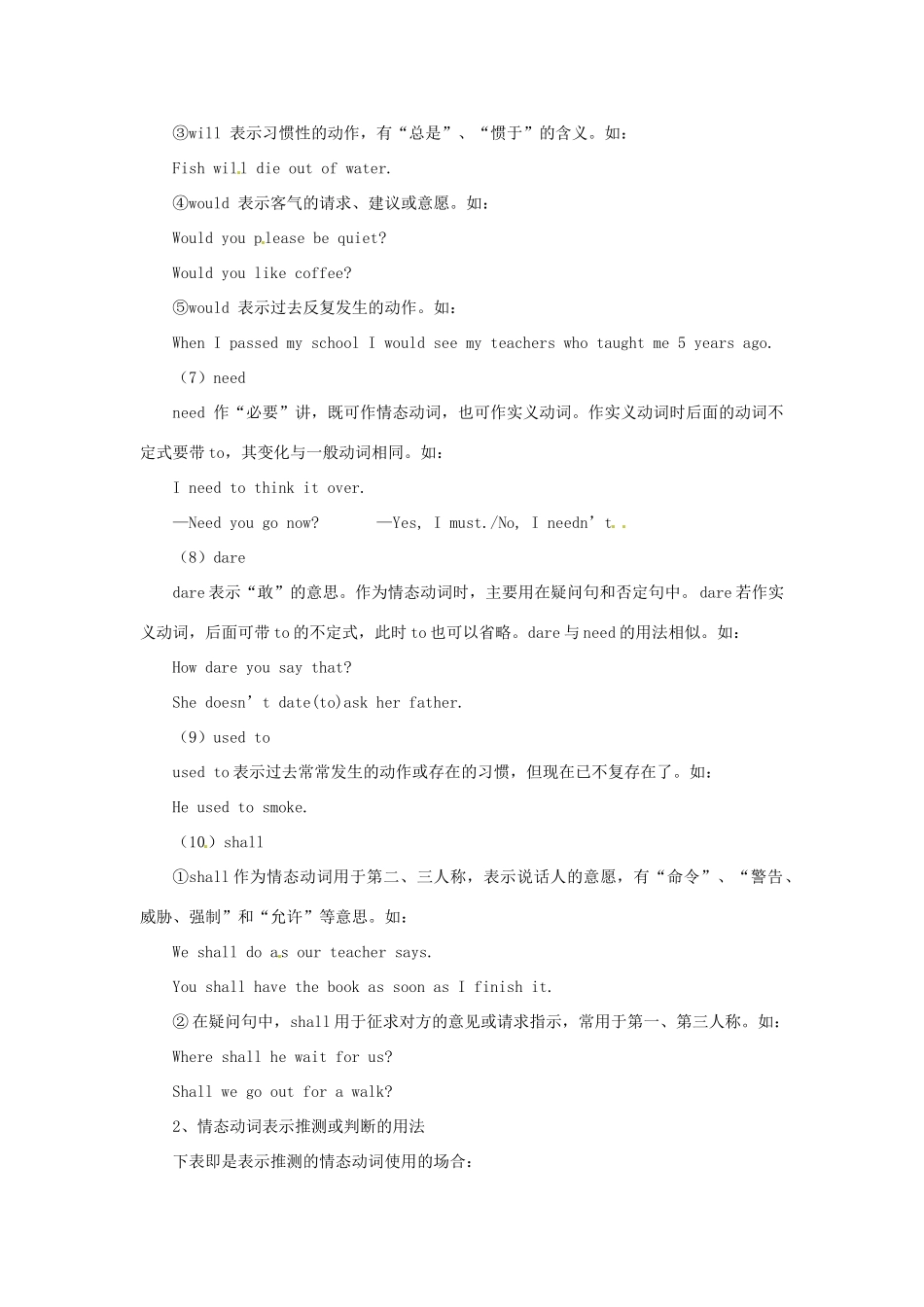2011 高考英语备考(考点聚焦+名题导解) 情态动词一、考点聚焦1、 情态动词的基本用法(1)can、be able to 和 could①can 和 be able to 都表示能力,意思上没多大区别。但 can 只有现在和过去时,而be able to 则有更多的形式。但当成功地完成某一具体动作时,通常不用 could 而用was/were able to 来表示。这时 was/were able to 相当于 managed to,表示经过一番努力,终于能够完成某事。如:Can you use chopsticks?The wounded man still was able to get to the village and was saved in the end.②can 和 couldcan 和 could都可以表示能力、技能、许可、建议或请求和可能性。但比较委婉客气地提出问题或陈述看法,一般用 could,回答时则用 can。如:Could you help me carry the bag?Can I help you?(2)may/might①may/might 表示可能,但 may 比 might 可能性大。如:-Why isn’t he in class? He may be sick.(生病的可能性较大)— He might be sick.(生病的可能性较小)②may/might 表示“允许”,may 用于现在时或将来时,might 常用在间接引语中表过去时,但 might 也可用于现在时间,表示比较委婉的语气,回答用 may。如:He says we may leave.He said we might leave.③may / might 表示建议或请求,但 might 比 may 更客气,意思更肯定而无过去时态的含义。 Yes, you can / may.—May / Might I use your bike? — No, you mustn’t(3)must①must 表示必须,应该,没有时态变化。如:You must do everything as I do.②must 表示肯定的推测。如:The light is still on, so he must be at home.③mustn’t 表示禁止做某事。如:You mustn’t smoke in the office.(4)have tohave to 表示“必须、不得不”,是由于某种外界(客观)原因而“必须”,“不得不”做某事,也可表示经常的或习惯性的事“必须”做。 have to 的否定形式表示不必。have to 可用于多种时态中。如:You will have to clean your own boots when you join the army.I have to be at my office every evening.(5)should / ought to①should 和 ought to 表示应当、应该,前者比后者语气轻。如:You should / ought to work hard.②should / ought to wor...


